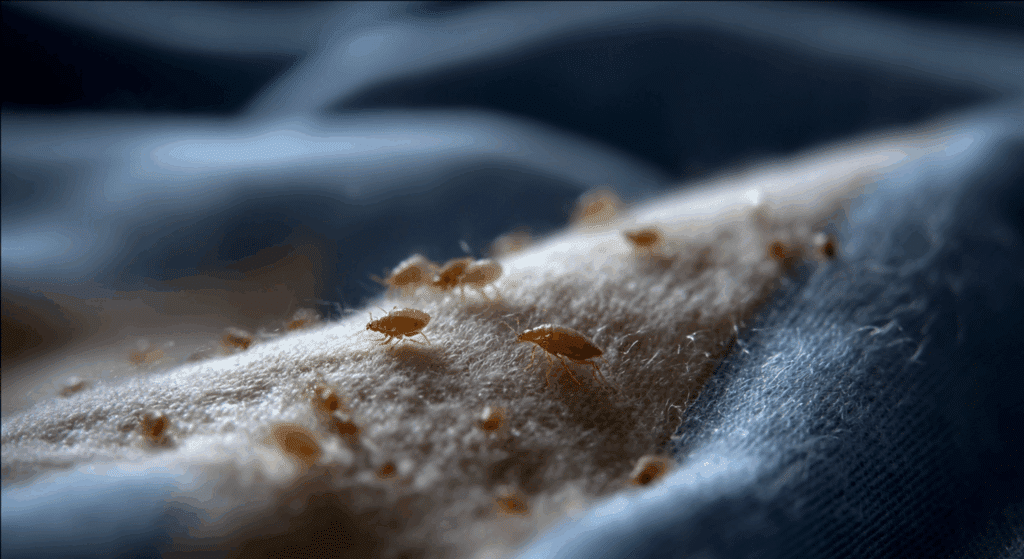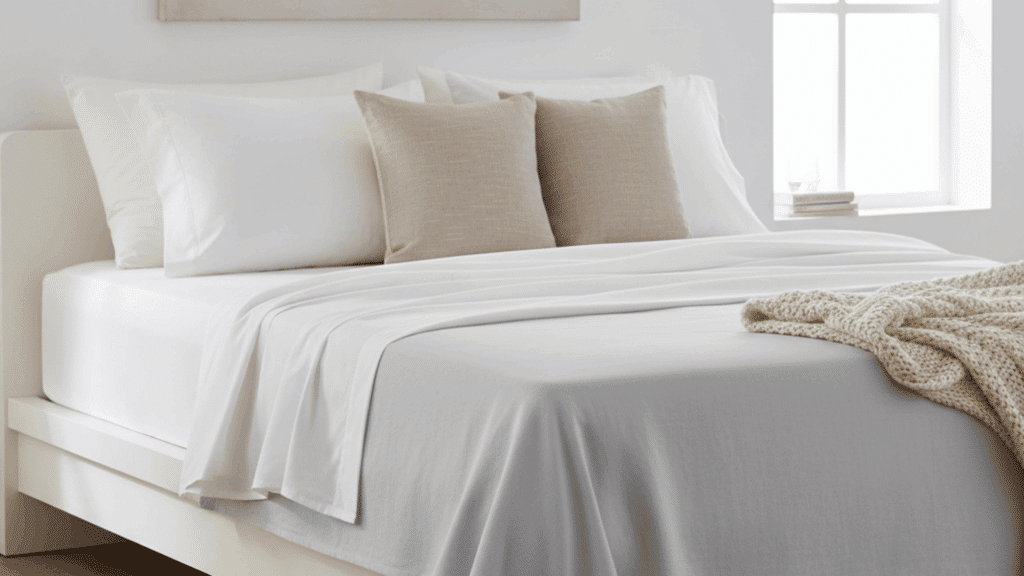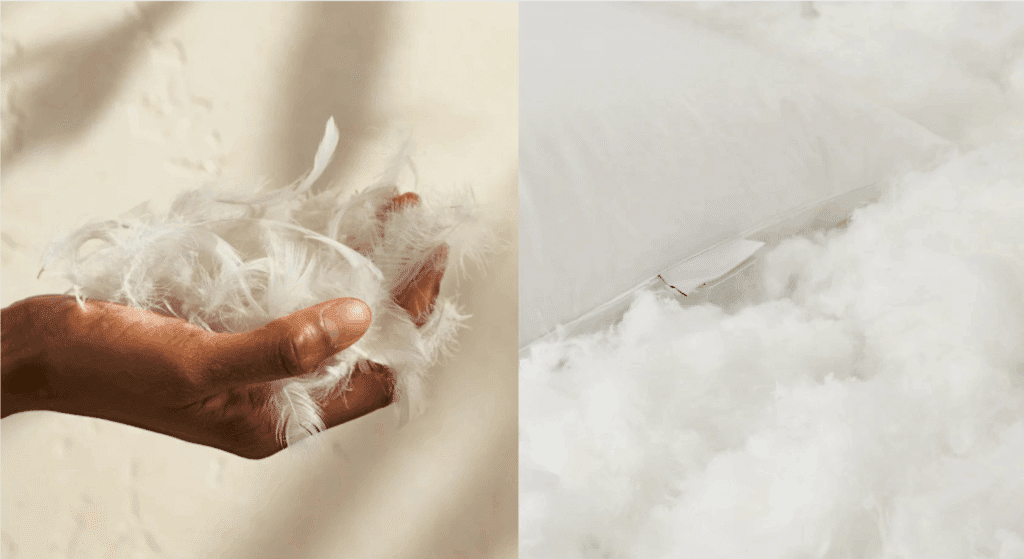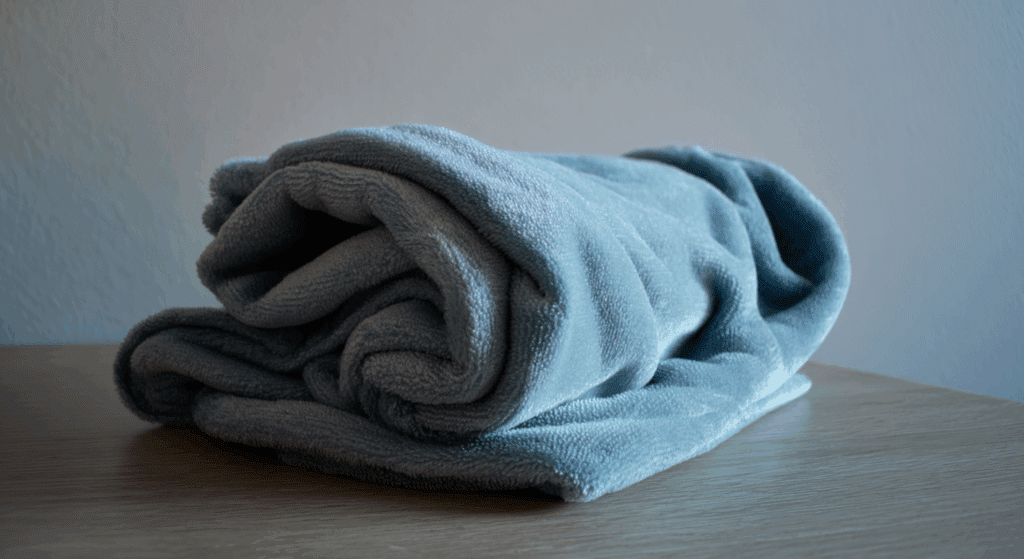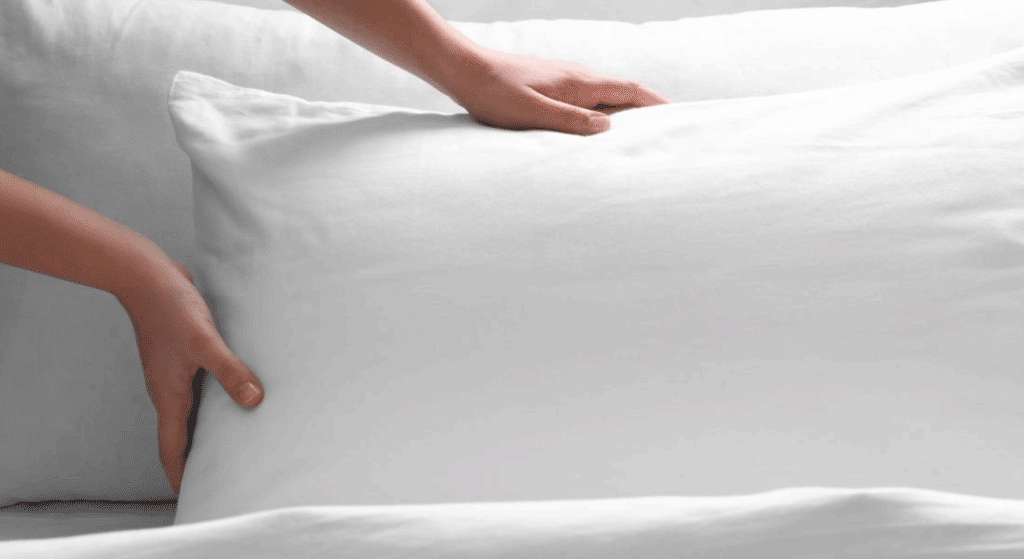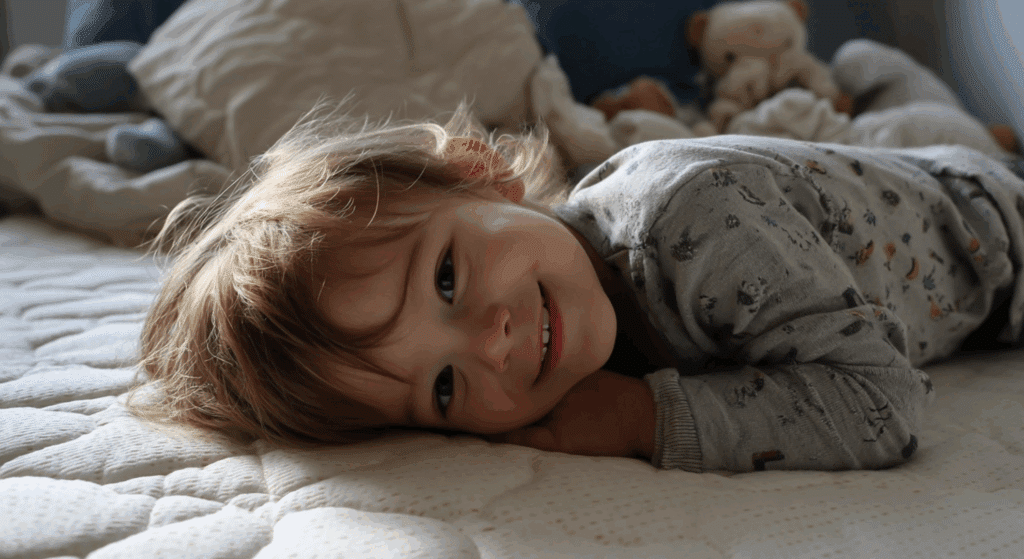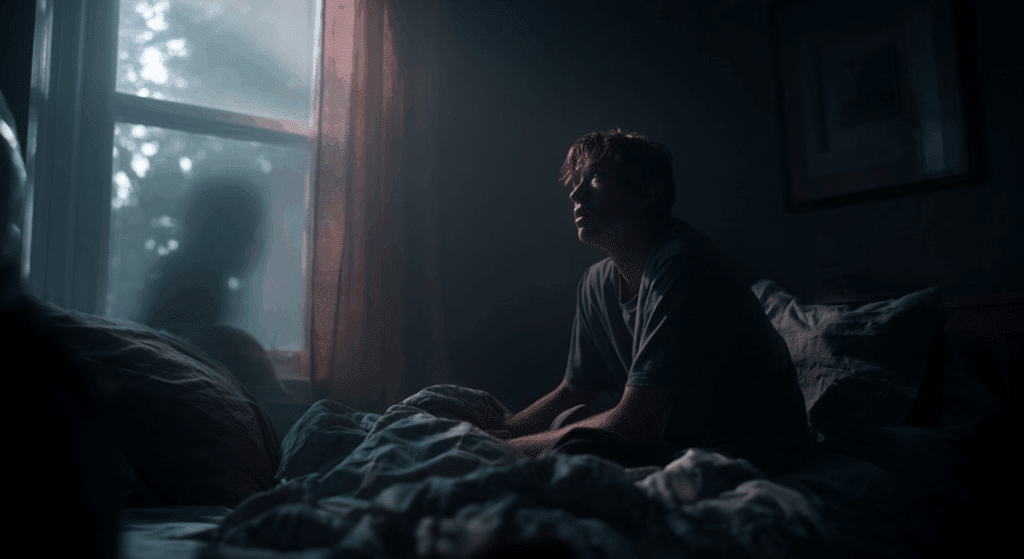Waking up itchy and spotting tiny white specks on my sheets had me worried. I wasn’t sure what I was dealing with at first—maybe lint or dandruff? But after some digging,
I found out it could be flea eggs on bed sheets, which was honestly the last thing I wanted to think about. I knew I had to figure out what was going on and how to handle it before it got worse.
If you’re in the same spot, this guide will help you confirm if those specks are flea eggs, understand how they got there, and learn what can kill them fast. You’ll also see how to keep them from coming back and when it’s best to call for help.
What It Means If You Find Flea Eggs on Your Bedsheet
Having flea eggs on your bedsheet is a sign that fleas are living and laying eggs in your space. This usually happens when fleas are on pets like cats or dogs, and they spend time on your bed.
The eggs are tiny and hard to see, but they fall off easily and can land on your sheets. Once the eggs hatch, they turn into larvae and then adult fleas. This means your bed could soon have live fleas biting you while you sleep. You might notice itchy spots or red bumps on your skin. Fleas can also carry germs that can make you or your pets sick.
So, finding flea eggs is not just gross—it means you need to act fast. You’ll need to wash your sheets in hot water, vacuum often, and treat your pets and home to stop the fleas from spreading. The sooner you deal with it, the better.
How to Tell If You Have Flea Eggs on Bed Sheets
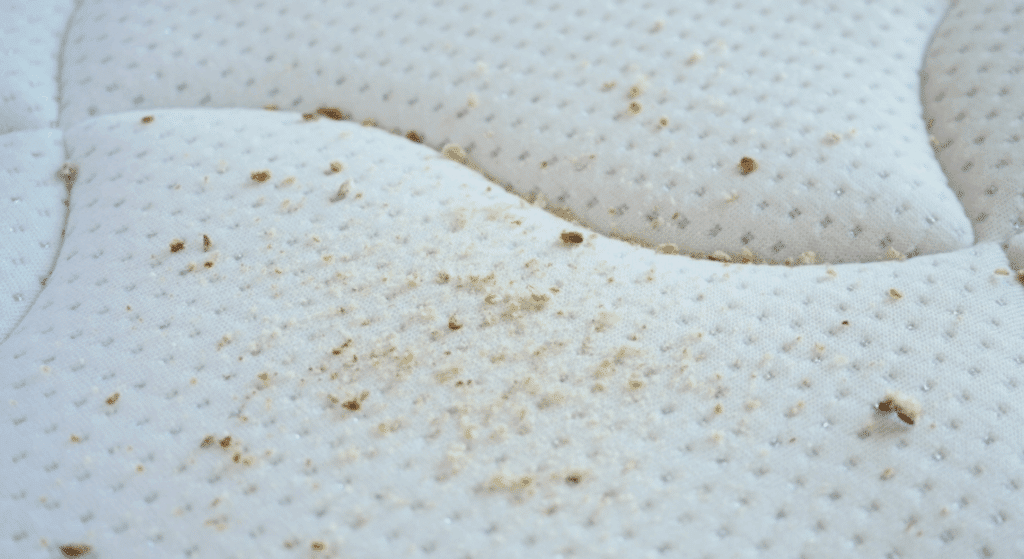
Fleas are small, fast, and sneaky. But their eggs? Even harder to spot. If you think you might have flea eggs on bed sheets, here are a few signs that can help you figure it out:
What Flea Eggs Look Like on Bedding
Flea eggs are super tiny, about the size of a grain of salt. They are oval-shaped and white or off-white. If you touch them, they feel dry and smooth, not sticky. On your sheets, they might look like tiny white specks that don’t move.
Here’s the tricky part: flea eggs on bed sheets often get mixed up with other things. You might think they’re dandruff, dust, or tiny bits of lint. They’re not much bigger than a dot made by a pencil tip. So if you see a bunch of small white bits in one spot, take a closer look. It could be flea eggs on bed surfaces, especially near where your pet sleeps.
Other Signs of Mattress Bed Fleas
You may not see the fleas themselves, but they leave behind other clues.
One of the biggest signs is flea dirt. This looks like tiny black or dark brown flakes—kind of like ground pepper. You’ll usually find it near flea eggs or where fleas are hiding.
Another clue? Itchy bites, mostly around your ankles, waist, or where your skin touches the bed. These bites come in small groups and usually itch a lot.
And don’t forget your pets. If your dog or cat is scratching more than usual, especially at night or after laying on the bed, that’s a strong sign. They might be reacting to fleas crawling through their fur or biting them.
Quick Test to Confirm Flea Eggs
Still not sure? Here’s a quick way to test:
Try the white speck test. Take a piece of dark fabric like a black shirt and rub it across your sheet. If white specks fall off, they might be flea eggs.
You can also do the damp paper towel method. Pick up some of the tiny specks with a tissue and place them on a wet paper towel. If the spots turn reddish-brown after a few minutes, it’s flea dirt. If they stay white and oval, they might be eggs.
Want a closer look? Use a magnifying glass to check the specks. You could also roll a lint roller over the bedding and then inspect what it picks up. Look for white ovals and dark flakes. If you find both, you likely have fleas in your mattress or bedding.
Why Flea Eggs End Up on Your Bed
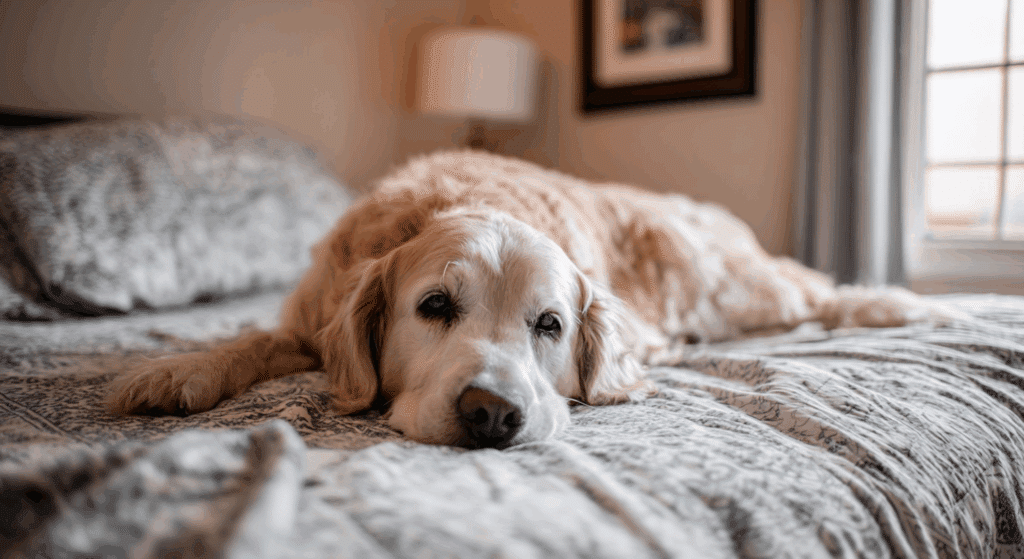
You might wonder how flea eggs even got on your bed in the first place. The answer is simple: they travel with your pets.
Fleas often live on cats and dogs. When your pet sleeps on the bed or even just jumps up for a few minutes, the fleas laying eggs in their fur drop those eggs right onto the sheets. Flea eggs don’t stick to fur. They fall off easily and land wherever your pet goes, including your bed, couch, or carpet.
Now let’s break down the flea life cycle, so it makes more sense. Fleas go through four stages:
- Egg: Laid by adult fleas in your pet’s fur. These eggs fall off onto bedding, furniture, or the floor.
- Larva: These hatch from the eggs in a few days. They look like tiny worms and try to stay hidden.
- Pupa: This is their cocoon stage. They wrap themselves up and wait until it’s safe to come out.
- Adult flea: This is the biting stage. They jump on pets or people to feed on blood, starting the cycle again.
This whole process can take just a few weeks or longer if the room is cold.
How Your Bed Becomes a Hot Spot
Because it’s soft, warm, and full of tiny spaces. Fabrics trap flea eggs easily. Plus, if your pet sleeps there, it gives fleas more chances to feed and lay even more eggs. Your bed is like a flea hotel: cozy, quiet, and close to a food source—you or your pet.
That’s why you might find not just eggs but also flea dirt and even live fleas in your sheets or mattress. They’re not there by accident. They’re just following their life cycle—and your pet brings them in.
Want to know how to get rid of them for good? Let me know when you’re ready for that part, and I’ll walk you through it step-by-step.
How to Remove Fleas from Bedding i Simple Steps
-
Take Off All Bedding: Remove sheets, pillowcases, blankets, and covers. If your pet sleeps on the bed, take off their blanket or bed too.
-
Wash and Dry Everything on High Heat: Wash all bedding in hot water with regular detergent. Then dry on the highest heat setting. This helps kill fleas, eggs, and larvae.
-
Vacuum the Mattress and Area Around the Bed: Vacuum the whole mattress, especially seams and corners. Also vacuum the bed frame, floor, and nearby furniture. Empty the vacuum right after and throw the bag away outside.
-
Use Steam: If you’re still seeing signs of fleas, steam the mattress. The heat helps kill anything left behind. Let it dry before making the bed again.
-
Spray the Mattress and Area: You can use a flea spray safe for fabric or a mix of water and vinegar. Spray lightly, let it dry, and make sure there’s no strong smell before sleeping on it.
-
Check Your Pet and Repeat if Needed: Make sure your pet is being treated for fleas. If you still see signs after a few days, repeat the steps. Fleas can come back if even a few eggs are left behind.
If you’d rather see how it’s done step by step, you can watch a quick tutorial video here for a closer look at the whole process:
How Long Fleas and Eggs Survive in Bedding and Mattresses
Flea eggs don’t last forever, but they stick around long enough to cause trouble. Once laid, flea eggs can survive in bedding for 1 to 10 days before hatching into larvae. The warmer and more humid the room, the faster they hatch. If the conditions are cooler or dry, they may take longer or even stay unhatched for a while.
Adult fleas can live in a mattress or bedding for a few days up to two weeks without feeding, but they usually don’t last much longer without a pet or human to bite. Still, they can hide and wait for a new host to show up.
The biggest risk is reinfestation. Even if the adults die off, eggs or larvae left behind can restart the problem. That’s why it’s important to clean the area more than once. Fleas can come back if even a few eggs survive and hatch later.
What Kills Flea Eggs Instantly
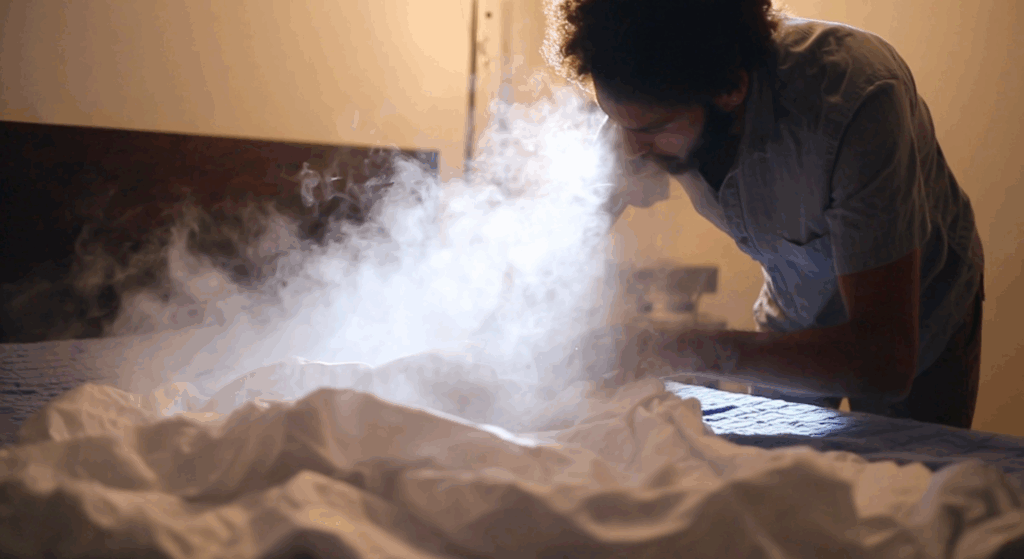
Flea eggs are tough to get rid of because they’re small, smooth, and easy to miss. If you want them gone fast, you need to know what actually works—and what doesn’t.
Heat and steam are the best ways to kill flea eggs right away. Washing bedding in hot water and drying on high heat can destroy flea eggs in just one cycle. Steam cleaning works too. The high heat kills flea eggs, larvae, and adult fleas all at once. Just make sure to vacuum first, so you remove any loose dirt or eggs on the surface.
Some natural remedies can help, but they don’t always work instantly. For example:
- A vinegar and salt spray can help dry out eggs and bother fleas, but it may take a few uses to fully work.
- Baking soda doesn’t kill flea eggs directly, but it can help loosen them from fabric when used before vacuuming.
- Diatomaceous earth is a fine powder made from fossil dust. It dries out fleas and their eggs, but it works slowly and must stay dry to be effective. Don’t use it directly on your bed—it’s best for floors and cracks.
Chemical options like flea sprays and foggers are stronger but need to be used with care. Some sprays contain insect growth regulators (IGRs), which stop eggs from turning into adult fleas. These don’t kill eggs instantly, but they break the cycle.
Avoid using strong chemical sprays directly on your bed unless the label says it’s safe for fabric. Many sprays are meant for carpets or floors and could be harmful to people or pets if used on pillows or sheets.
What Doesn’t Work?
Cold water, regular vacuuming (unless followed by heat), and many “all-natural” sprays that don’t contain proven ingredients won’t kill eggs right away. Fleas can survive if even a few eggs are left behind, so using the right method matters.
If you want the fastest results, go with heat and steam. They’re safe, simple, and they work right away.
When to Call a Professional for Mattress Bed Fleas
If you’re still seeing fleas after cleaning, washing, and treating your pets, it might be time to call a pro. Signs that your own methods aren’t enough include constant bites, flea dirt returning, or seeing live fleas even after multiple cleanings.
Pest control services usually inspect your home, treat the infected areas with stronger products, and may do follow-up visits. They target fleas at every stage—egg, larva, and adult.
Costs can range from $100 to $300, depending on the size of the area and how bad the problem is. Before the visit, wash bedding, vacuum well, and keep pets out of the treated areas.
Professionals can help stop a serious flea problem from getting worse.
Conclusion
Finding out I had flea eggs on the bed sheets wasn’t fun, but learning what they look like, where they come from, and how to get rid of them made things easier.
I realized that quick action and regular cleaning made a big difference. Treating my pet and washing everything helped stop the problem before it got worse.
Now it’s your turn. Take a look at your bedding and see if any of the signs sound familiar. You’ve got clear steps to follow and simple ways to keep fleas from coming back. Just don’t ignore the early signs, flea eggs can hatch fast.
Want to stay ahead of it? Check out other blogs on the website for more helpful tips to keep your home clean, safe, and flea-free!

